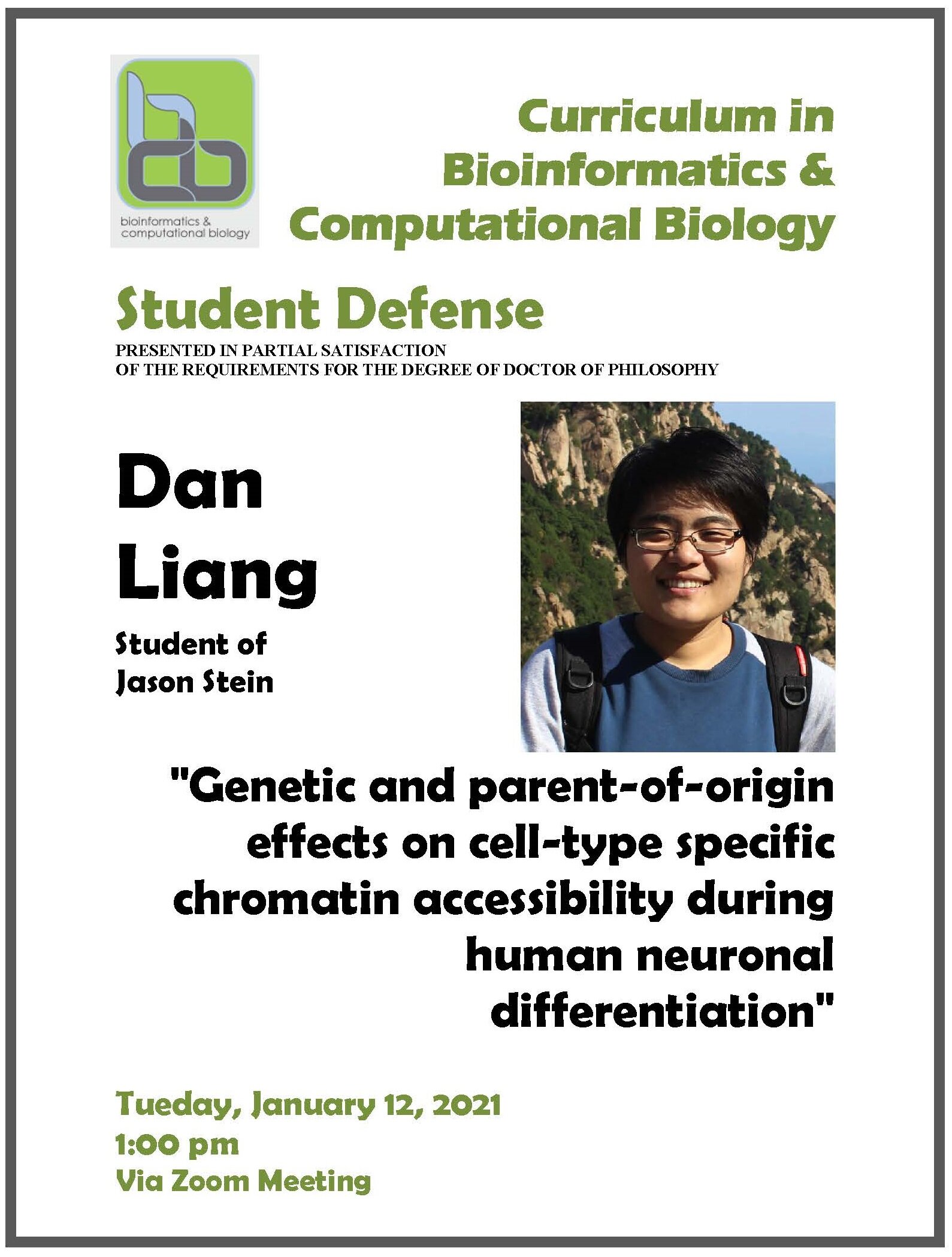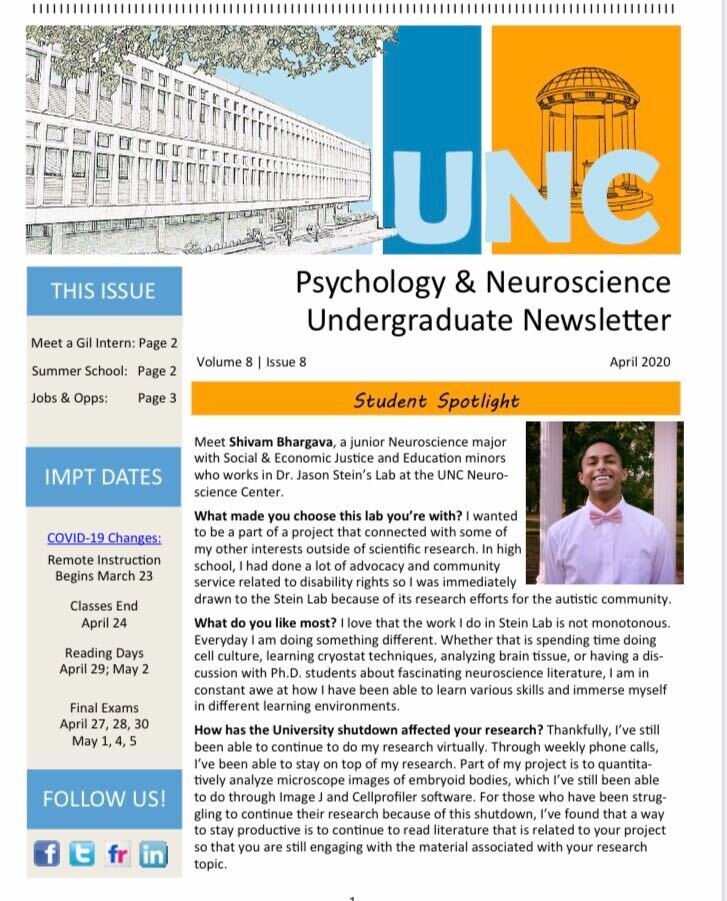Congratulations to Dr. Oleh Krupa, the second Ph.D. from the Stein lab! Oleh’s primary project was acquiring and analyzing tissue cleared images of brain structure (https://www.biorxiv.org/content/10.1101/2020.09.11.293399v2). He contributed to many other projects in the lab as well. We’re so proud of all you’ve accomplished!
Spotlight on Carla Escobar-Tomlienovich
Preprint released on Segmentor
We released a pre-print on Biorxiv about Segmentor, a tool for manual refinement of 3D nuclei annotations. Deep learning nuclear segmentation algorithms require a whole lot of manually labeled samples, both for training and for validation. So, we made a piece of software to make this process easier. The software is publicly available now at nucleininja.org.
Rose Glass awarded pre-doctoral NRSA
Congratulations to Neuroscience graduate student Rose Glass, who won a pre-doctoral NRSA! Her project will examine how well iPSC-derived cerebral organoids model the brain growth trajectory of the individuals from which they were made.
Justin Wolter leads study on potential gene therapy for Angelman syndrome
Congratulations to Justin Wolter (joint postdoc in the Stein and Zylka labs) and the entire Zylka lab for leading a study describing a CRISPR based gene therapy approach for increasing paternal UBE3A expression. This was validated not only in mouse, but also in neurons derived from primary human neural progenitors. The study was published in Nature.
Dr. Dan Liang successfully defends her dissertation
Congratulations to Dr. Dan Liang, the first student to defend her Ph.D. dissertation in the lab. We’re so very proud of all you accomplished in graduate school!
Preprint on cell type specific eQTLs
Nil Aygün, a graduate student in the lab, has led a project to identify how genetic variation affects gene expression during human cortical neurogenesis. Importantly, this was completed in a cell-type specific approach, where we studied two cell types involved in neurogenesis - neural progenitors and their neuronal progeny. Most eQTLs were cell-type specific and not detected in previous bulk tissue eQTLs. This implies we may be missing a lot of gene regulation with bulk tissue QTLs. Also, many of these loci co-localize with neuropsychiatric disorder GWAS, allowing inference of genes dysregulated in these disorders. Check out the pre-print here.
Paper published in Human Brain Mapping on genetic architecture of brain traits as compared to neuropsychiatric disorders
Nana Matoba, a postdoc in the lab, led a study to evaluate whether brain traits satisfy one aspect of being an endophenotype for neuropsychiatric disorders. That is, are brain structure traits “closer to the underlying biology” than heterogeneous and behaviorally defined neuropsychiatric disorders? We evaluated this by comparing polygenicity, the total number of variants that are associated with a disorder, and discoverability, the distribution of effect sizes for a trait. An endophenotype is hypothesized to have reduced polygenicity and increased discoverability compared to a disorder. For some brain structure traits, like cortical surface area, relative to aggregated estimates across multiple neuropsychiatric disorders, we provide evidence to support brain structure traits as satisfying this aspect of an endophenotype. You can read more about this here.
NuMorph: analyze your tissue cleared images
Oleh Krupa led a project to develop a tool used for analyzing tissue cleared images. He imaged WT and Top1 cKO mice, getting beautiful cellular resolution images of the entire brain. Using the tool he developed, he was able to accurately quantify all nuclei in the cortex, accurately count individual cell types, and identify differences in cell type proportions and density between the genotype groups. This is a tool that we hope will be widely useful to the research community for studying genetically mediated differences in brain structure!
Preprint on identifying causal genes associated with traits
Both GWAS and eQTLs often have allelic heterogeneity - multiple independent loci close to each other influence the same trait/gene. You can use this information as a natural experiment to infer causality of a gene in trait levels. Do slight wiggles in levels of a gene expression lead to slight wiggles in the level of a trait? If so, that’s evidence for causal function of the gene in the levels of the trait. Led by Mike Love, we developed a tool called MRLocus that integrates eQTL and GWAS to identify causal genes mediating trait differences. Read more about it here: https://www.biorxiv.org/content/10.1101/2020.08.14.250720v2.full.
Jordan Valone starts grad school at UNC
Jordan Valone, a research technician who has been working with us for about a year, started graduate school today here at UNC in the BBSP program. Good luck Jordan and thanks for all of your work!
GWAS of Autism Spectrum Disorder in SPARK published in Translational Psychiatry
We completed a GWAS in the SPARK dataset , identifying a new genome-wide significant locus and performing some validation studies to identify causal variants within an associated locus. The work was published in Translational Psychiatry: https://www.nature.com/articles/s41398-020-00953-9.
Pre-print on the genetic architecture of brain structure
Human brain structure traits have been hypothesized to be broad endophenotypes for neuropsychiatric disorders, implying that brain structure traits are comparatively ‘closer to the underlying biology’. Genome-wide association studies from large sample sizes allow for the comparison of common variant genetic architectures between traits to test the evidence supporting this claim. Endophenotypes, compared to neuropsychiatric disorders, are hypothesized to have less polygenicity, with greater effect size of each susceptible SNP, requiring smaller sample sizes to discover them. We compared polygenicity and discoverability of brain structure traits, neuropsychiatric disorders, and other traits (89 in total) to directly test this hypothesis. You can find the pre-print here: https://www.biorxiv.org/content/10.1101/2020.07.17.208843v1.full.
Grace Morningstar receives Honors in Biology
Grace Morningstar successfully completed her undergraduate honors thesis in Biology. Her thesis work was entitled “Investigating the mechanism of a common genetic variant associated with human cortical surface area”. Congrats Grace and we wish you best of luck in your future scientific career!
Shivam Bhargava featured in Undergrad Newsletter
Shivam Bhargava, an undergraduate student who works on iPSCs in the lab, was featured in the Psychology & Neuroscience newsletter for his research in our lab. Congrats Shivam!
Congratulations to Jessica Mory and Ellie Hadden-Ford for completing their Undergraduate Honors Theses
Jessica Mory and Ellie Hadden-Ford are undergraduate students that have been working in the lab over 2 years. They both were enrolled in the Psychology & Neuroscience undergraduate honors thesis program. They worked on projects to culture and image human neural progenitor cells and their differentiated neuronal progeny through high content imaging. Both gave excellent zoom thesis defense talks (due to COVID) and wrote clear theses. The committees unanimously awarded each of them highest honors for their work. Congratulations to both of you and best of luck as you go on in your scientific career!
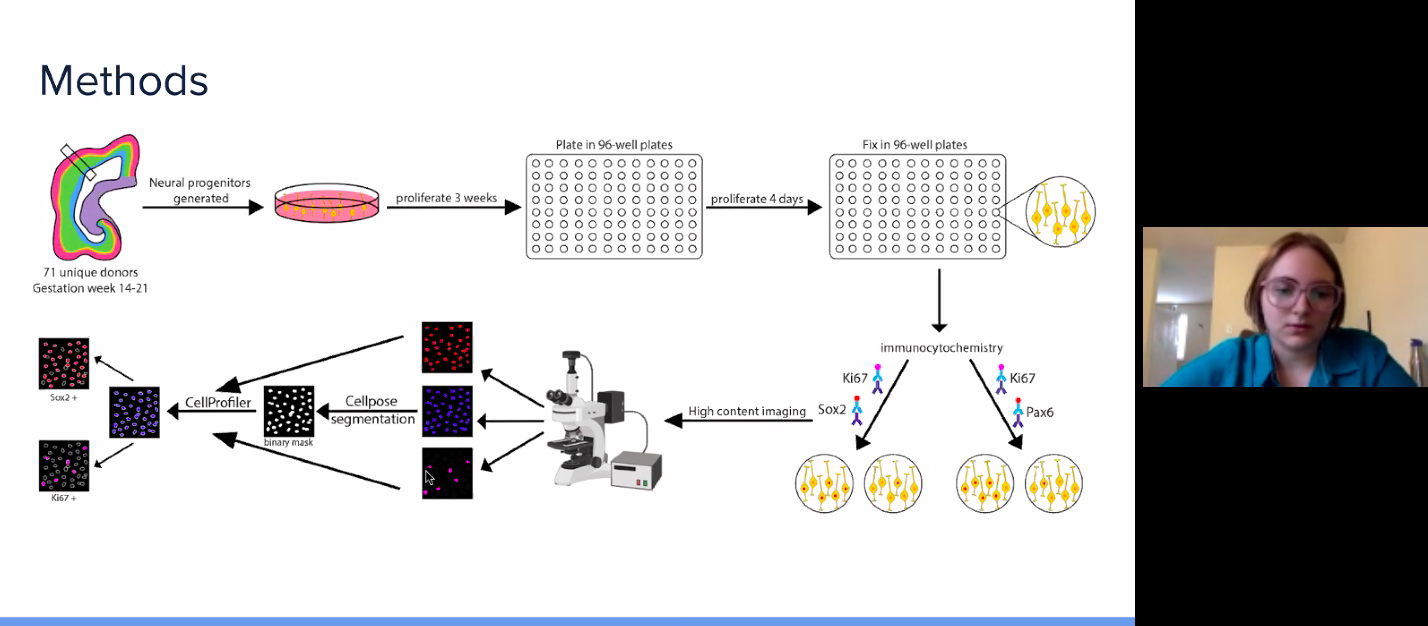
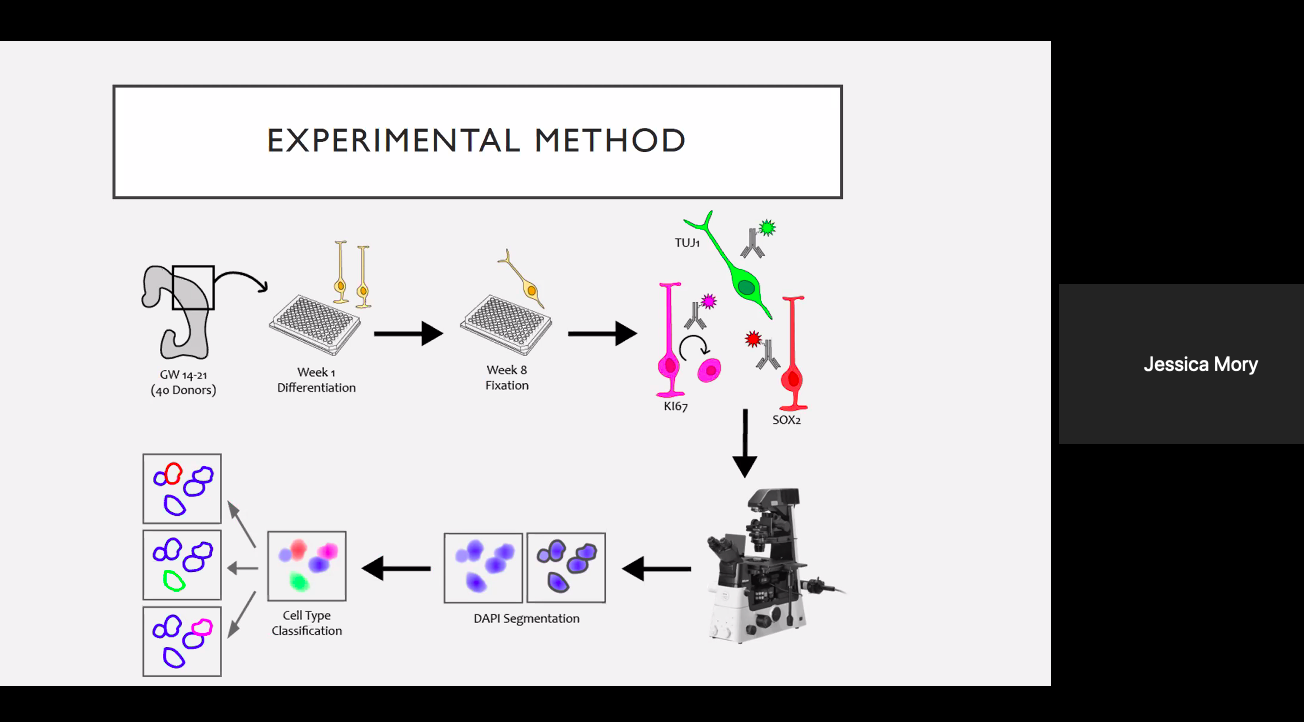
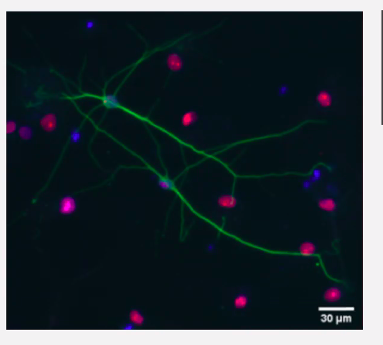
Virtual talk at Boston Children's Hospital
This is a talk on some of our recent work on discovering genetic variants associated with human cortical structure and how those variants influence gene regulatory potential in the developing brain. The talk was given on April 14, 2020 as a virtual seminar on Zoom due to the COVID crisis.
Dan Liang wins Dissertation Completion Fellowship
Congratulations to Dan Liang, who won the Dissertation Completion Fellowship! She’ll be finishing up her dissertation work this year on chromatin accessibility differences during human cortical differentiation.
Welcome to Felix Kyere, new neuroscience graduate student
We’re happy to have Felix Kyere, a graduate student in the neuroscience graduate program, join our lab for his dissertation work. Welcome Felix!
GWAS of Cortical Structure published in Science
As part of the ENIGMA consortium, we published a large study to demonstrate how genetic variation in humans impacts cortical structure. We identified 199 loci that were significantly associated with cortical structure by a stringent criterion. We also found that those genetic variants that influence adult surface area are enriched in genomic regions active in progenitor cells during neuronal differentiation well before birth. This is evidence in humans supporting the Radial Unit Hypothesis, put forward by Pasko Rakic in the 1980s. In addition, there were genetic correlations detected between cortical surface area and several traits including cognitive abilities and ADHD. This implies that genetic variants that impact cortical structure also impact cortical function. You can find our work published here. This is a huge collaboration and wouldn’t be possible without the joint work of literally hundreds of scientists. We started the ENIGMA consortium about 10 years ago, and this is our latest and greatest work. It’s particularly exciting because the structure of the cortex allows us to have human specific abilities and disruption of cortical structure is thought to cause neuropsychiatric disorders.





